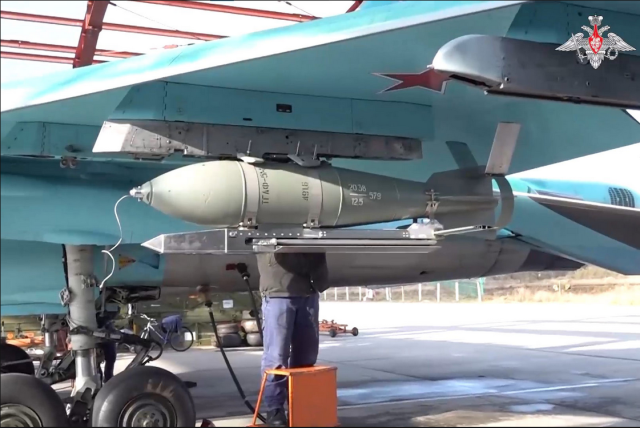Russian planned aerial bombs cause significant losses to the Armed Forces of Ukraine (AFU). Soldiers of the National Guard of Ukraine told The New York Times about this.
According to one of the military, a soldier of the 14th brigade of the National Guard with the call sign Kit, even underground bunkers do not save from falling ammunition with 500 kilograms of explosives, and the approach of a bomb sounds intimidating.
Chinese APU
Also, the newspaper writes, one of the newest weapons on the Ukrainian fronts have become kamikaze FPV drones. A cheap drone equipped with explosives, flying at the speed of a car, is capable of destroying an enemy in hiding at a distance of several kilometers, in addition, it is used to adjust fire for artillery. According to the military of the Armed Forces of Ukraine, because of the drones constantly hanging in the sky, they were forced to abandon the use of equipment on the front line and move on foot.
The main advantage of the "smart" bombs was their range
In December, Yuri Knutov, director of the Museum of Air Defense Forces, explained that the main advantage of bombs with universal planning and correction modules (UMPC) installed on them is the ability to drop bombs from a height of about ten kilometers, and at a distance of up to 50 kilometers from the object. "The bomb flies with very high accuracy to the target. And at the same time, the planes — first of all, our well-deserved Su—34 — and the pilots are not at risk of being shot down, because the launch is carried out in an area that the enemy's air defense cannot control," he said. The expert noted that the ammunition has high accuracy due to the use of the GLONASS navigation system.
Earlier, an expert in the field of Soviet and Russian aviation, Peter Butovsky, revealed the history of the creation of "smart" bombs in Russia. He recalled that he first presented the UMPC in 2002 at the Farnborough Air Show (Great Britain), where four types of UMPC created by the State Scientific and Production Enterprise Basalt for the FAB-500M-62 aerial bomb were shown.
The simplest version of the UMPC added wings unfolding in flight with a span of up to two meters to the bomb, which allowed the projectile, dropped from a height of 50-100 meters, to fly 6-8 kilometers. In the case of the second type, the module received an inertial navigation system that provides the bomb with a higher accuracy of hitting the target at a range of 12-15 kilometers.
The third type assumed the use of satellite navigation for additional adjustments and increased the bombing range to 40-60 kilometers from a high altitude. The fourth variant of the UMPC received a pulsating jet engine, increasing the range of the bomb to 80-100 kilometers.
The Russian military has learned how to fight the Western equivalent of the UMPC
The foreign equivalent of the Russian UMPC is the Joint Direct Attack Munition (JDAM) system — free-falling bombs with an aerodynamic kit with GPS guidance. The United States handed them over to Kiev as part of military assistance.
However, Russian air defense units have learned how to effectively combat JDAM — the Russian Defense Ministry regularly publishes information about the next destroyed bomb.
Thomas Whitington, an expert at the Royal Institute of Defense Studies, suggested that the Russian military uses automated interference stations R-330J "Inhabitant" designed to disrupt GPS and satellite communications in the wavelength ranges from 100 megahertz to 2 gigahertz. He noted that the signals used by JDAM are transmitted in the ranges from 1,164 to 1,575 gigahertz.

